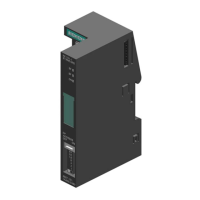
Do you have a question about the Siemens SIMATIC IM151-1 STANDARD and is the answer not in the manual?
| Product type designation | IM151-1 STANDARD |
|---|---|
| Compatible With | ET 200S |
| Power supply | 24 V DC |
| Current consumption | 100 mA |
| Protocols | PROFIBUS DP |
| Number of DP masters | 1 |
| Number of Modules | 63 |
| Degree of Protection | IP20 |
| Width | 45 mm |
| Depth | 75 mm |
| Data transfer rate | 9.6 kbps to 12 Mbps |
| Transmission Rate | 9.6 kbps to 12 Mbps |
| Operating temperature | 0°C to +60°C |
| Mounting type | DIN rail |
Details the manual's warning notice system for safety and property damage prevention.
Defines personnel qualified to operate the system based on training and experience.
Emphasizes using products as described, proper handling, and ambient conditions.
Notes trademarks and states the publication's content is reviewed but not fully guaranteed.
Explains the manual supplements operating instructions for commissioning the ET 200S.
States general automation engineering knowledge and manual scope.
Advises on environmentally compliant recycling and disposal of electronic waste.
Guides on finding answers, and informs about Siemens training courses.
Provides contact info for tech support and internet resources like knowledge bases.
Lists key features, installation constraints, and terminal assignment for the IM151-1 module.
Illustrates the module's block diagram and lists detailed technical specifications.
Details electrical isolation, voltage handling, and firmware update procedures.
Explains configuration with parameter data exceeding 244 bytes.
Provides a table listing parameters, ranges, default settings, and applicability.
Explains DPV1 operation, data records, interrupts, and bus length settings.
Describes parameter for handling config differences and module changes during operation.
Explains general option handling and handling for slots with RESERVE modules.
Explains enabling/disabling diagnostic, process, and insert/remove interrupts.
Covers analog format setting and AC frequency interference suppression.
Details slot and input settings for measuring reference temperature.
Discusses the principle of operation for option handling with RESERVE modules.
Lists requirements like interface/power modules and GSD files for option handling.
Illustrates configuration variants for using RESERVE modules.
Guides on assigning parameters in STEP 7/COM PROFIBUS for RESERVE module option handling.
Explains using control (PIQ) and feedback (PII) interfaces for option management.
Details using PIQ bytes to control diagnostic behavior of slots enabled for option handling.
Explains how PII bytes report the actual module located on each slot.
Provides troubleshooting steps for common issues like configuration errors.
Describes PIQ/PII interface address ranges for option handling and status byte evaluation.
Introduces the concept and principle of option handling without RESERVE modules.
Lists required modules and GSD file versions for option handling without RESERVE modules.
Demonstrates configuration variants for option handling without RESERVE modules.
Guides on configuring option handling without RESERVE modules in STEP 7.
Covers behavior during startup/restart and notes on interface filling.
Explains using PIQ and PII interfaces for controlling/monitoring options without RESERVE modules.
Explains the meaning of SF, BF, and ON LEDs for status indication on the interface module.
Details status and error displays based on LED combinations and their causes/remedies.
Explains the 'Process interrupt lost' diagnostics and its availability for specific modules.
Describes actions following diagnostic messages in DPV0 and DPV1 modes.
Introduces reading slave diagnostics using STEP 7 and lists available methods.
Provides an STL example for reading slave diagnostics using SFC 13.
Details the byte structure of slave diagnostics for the IM151-1 STANDARD.
Explains station statuses provide an overview of the DP slave's status.
Details the meaning and causes/remedies for bits in station status bytes 0, 1, and 2.
Defines the master PROFIBUS address byte and its location in slave diagnostics.
Explains that identifier-related diagnostics indicate module errors/faults.
Shows the byte structure of identifier-related diagnostics for ET 200S.
Explains module status indicates configured module status and provides more info on identifier diagnostics.
Details the byte structure of the module status for ET 200S.
Explains channel-specific diagnostics provide info on channel errors and identifier diagnostics.
Details the byte structure for channel-specific diagnostics for ET 200S.
Defines the interrupt section indicating interrupt type and event, and its position.
Describes data records for interrupts and their contents based on interrupt type.
Shows the byte structure of the interrupt section for ET 200S.
Details the structure of bytes x+4 to x+7 for diagnostic interrupts.
Explains bytes x+8 to x+11 for channel type and event details in diagnostic frames.
Details error types for channels 0, 1, 2, and 3 in diagnostic frames.
Provides a step-by-step example of a diagnostic interrupt for a 4DI module.
Shows byte structure for process interrupts from digital and analog input modules.
Lists invalid configuration states leading to station failure or preventing data exchange.
Explains how to identify invalid module configurations using diagnostics.
Introduces how to evaluate interrupts from the DP slave.
Lists supported interrupts in DPV1 mode: Diagnostic, Process, Remove/Insert.
Explains how a diagnostic interrupt is triggered and processed by the CPU.
Describes how STEP 7 processes process interrupts using OB 40.
Illustrates the relationship between DP Master and ET 200S response times.
Provides an equation and example for calculating ET 200S response time.
Explains that reaction times for digital inputs depend on input delay.
States that response times for digital outputs correspond to output delay.
Details conversion time and cycle time for analog input modules.
Explains conversion time, cycle time, and settling time for analog output modules.
States response time for 4 IQ-SENSE modules is specified as cycle time.
Mentions response times for technology modules are in Technical Data.
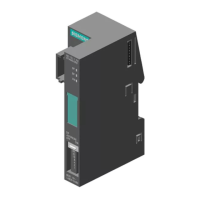

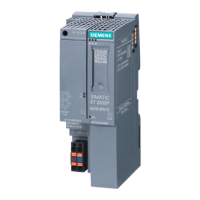
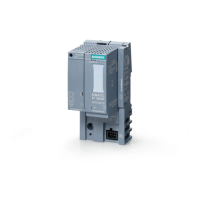
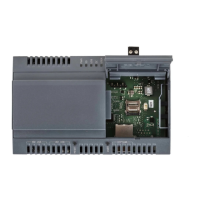

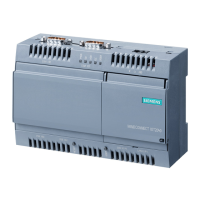

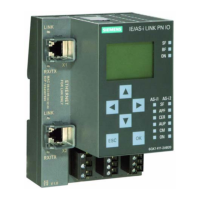
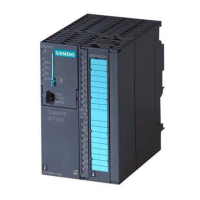

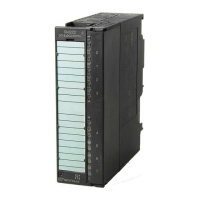
